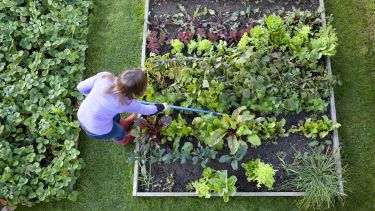More than half of the growing global population now live in cities and towns, and in the UK and many other countries in the global north that figure exceeds 80%. As a consequence, most people are now physically distant from the production of food.
Urban horticulture – growing fruits and vegetables within cities and towns – can support biodiversity and improve health and wellbeing. It can also reconnect the urban population with food production, and make a potentially important contribution to food security.
Allotments – plots of land leased to individuals to grow fruit and vegetables – could play a key role in increasing urban food production. Our research shows that although they have seen a significant fall since their peak in the 1950s, allotments still make an important contribution to local food security. There is also the potential to greatly increase this contribution.
Grow your own
During the COVID-19 pandemic, more people have started to grow their own produce, and local authorities have seen increases in the waiting lists for allotment plots. This is likely due to people spending more time at home, and perhaps also being more aware of the fragility of the global food system.
Access to fresh fruit and vegetables is key to any nation’s health and food security, but countries now rely on complex global supply chains to deliver crops to the population. Urban horticulture could be used to increase the domestic supply of fruit and vegetables, producing food locally and close to the point of demand. This would also increase the resilience of supply of fruit and vegetables to people living in cities and towns in response to future food shocks like those seen at the start of the COVID-19 pandemic.
In the UK and many other countries in the global north, the majority of urban horticultural production is at a household level. It takes place in gardens, allotments, or community growing spaces.
This has played an historically important role in the British diet. During the second world war, households grew 18% of the UK’s fruit and vegetables by value in allotments and gardens. But the quantity of land made available for allotments has since fallen dramatically. Our research shows that between the 1950s and the present day, there has been a 65% reduction in allotment land in the UK.
Lost land
This reduction has not taken place evenly across the UK. The most deprived communities have faced an eight times greater loss of allotments when compared to the least deprived. This is a loss of the ability to grow food in areas where communities are most at risk from not having enough food.
Despite being at an all-time low in provision, we estimated that in both Leicester and Sheffield, allotments were still producing enough food to feed 3% of the cities’ population their recommended five portions of fruit and vegetables a day.
In Sheffield, allotments currently account for less than 2% of the city’s available green space. Our analysis showed that, in addition to existing allotments, a further 11% of the city’s green space is suitable for this kind of horticulture, and 4% is suitable for community gardens.
This could feed a third of the Sheffield population their five a day annually, though clearly not all of this land could or should be used for urban horticulture. If just a fifth of it was used for this purpose, it could still feed 7% of the city’s population their five a day, more than doubling current provision.
Our research has shown that there is clear potential to expand horticultural production. It is also important that any conversion of land for this practice should be done equitably across cities and towns, so that disadvantaged areas get as much space as wealthier areas.
Many UK towns and cities have already successfully integrated food-growing into their urban landscape, with the involvement of the local community. An example is the Incredible Edible Network of community-growing plots, built from an initial project in Todmorden, Yorkshire.
More research is needed to understand the issues that could drive or constrain the expansion of urban horticulture. These include understanding the trade-offs between competing demands for green space in cities, such as between recreation and horticulture.
It is also crucial to understand the factors which might stop people from taking up urban horticulture, as well as raising awareness of its benefits. This could include informing people about the gains in health and wellbeing that come from growing food, and providing education to encourage people into urban horticulture.
This article is republished from The Conversation under a Creative Commons license. Read the original article.
Contact us:



